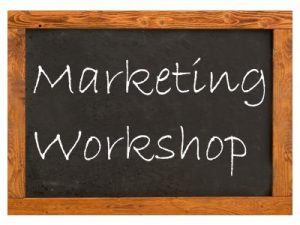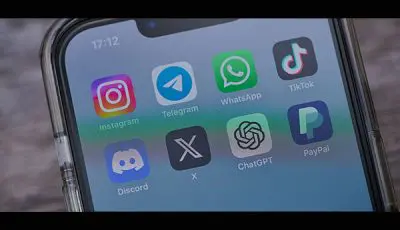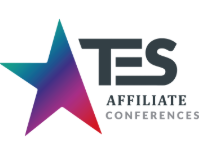Seven Tips for Crafting Effective CTAs
By Brooke Harper, Special to YNOT
 More than 90% of visitors who read your headline also read your CTA copy. If 90% of your visitors also became lifelong customers, business would be booming — right? So what is preventing all those visitors from taking action and becoming fans?
More than 90% of visitors who read your headline also read your CTA copy. If 90% of your visitors also became lifelong customers, business would be booming — right? So what is preventing all those visitors from taking action and becoming fans?
It’s clear that the right call-to-action (CTA) can make or break your marketing campaign. And with so many variables at play, what makes the difference between a strong and weak CTA? What is it about your CTA that will make someone click through to buy or support your product?
Good CTAs do seven things effectively. Follow these guidelines and see the effectiveness of your CTAs skyrocket.
1. Identify the problem. Like any good sales funnel, start your marketing effort by identifying what problem or obstacle your campaign is trying to resolve. Users are more likely to respond to a call to action if they recognize it solves something they need. Focus on the immediate benefit a potential customer will have if they click through. Instead of making an emotional appeal, the best calls to action present a clear solution to an obstacle. For example, if a user is trying to find a way to schedule social media posts, make your CTA “click for one week of scheduled Tweets.”
2. Focus on the benefit. In the same vein as the first point, you want to focus on a solution in your CTA. As marketing expert Neil Patel describes, “If people aren’t sure about the value that your CTA button will deliver, they’re not going to click it. Having tested different copy on my CTA buttons, I’ve decided to stick with offering benefits with any action button.” Benefit, or value, is something that you have that your customers want.
How do you identify what that is? Use integrated insights from your Google Analytics, sales, support, and service data to uncover what is most attractive to your customers. What can you give them that no one else can? Common benefits that work for CTAs include a free trial of a product, a free consultation, or a free white paper or ebook.
3. Test your copy. Your data should give you good background on what benefit will gain the most traction with potential customers. From there, it’s important to figure out how to craft your copy in the most compelling way. The best CTAs generally use a lot of verbs. Write your CTA in the imperative mood to give a clear and direct command of what to do next. Even better, if you can use a highly personalized CTA button, you’ll see more clicks. Try to incorporate your brand voice to keep a consistent experience for your customers no matter how they interact with your business.
The best approach to finding the right CTA is to test it. A/B testing involves picking a control version (A) and testing it against an alternate (B) to see which performs better. Play with different variables — verbs, offers, design, and length of your CTA — to see what combination is most effective. Tools like Hubspot and Optimizely can help you figure out which CTAs work best.
4. Consider your platform. Calls to action work on webpages, email campaigns, social media platforms, and any other outreach you can think of. However, what you should ask for in your CTA varies by platform. Consider your goal for that marketing funnel when crafting your CTA: you wouldn’t ask for shares or likes on your landing page, but you might on Facebook or Twitter.
CTAs have amazing results on some social media platforms. On Twitter, Salesforce found that brands asking for Retweets received 10 times more Retweets and those that spelled out the word ‘Retweet’ (as opposed to RT) received 23 times more. Twitter did their own study on the most effective CTAs within their platform, and offered a pro-tip for each one. Another study discovered that by adding CTAs to your Facebook page, you can increase click-through rate by 285%. On Instagram, you can add a pre-set CTA button at the end of sponsored posts that will be clickable and trackable.
5. Use good design. In the case of CTA buttons, beauty is not in the eye of the beholder. There are some best practices for designing effective CTA buttons. First: make it big. Your CTA should stand out from the page. Enlarging it — and setting it apart from your other content — can draw a viewer’s attention right to your CTA. Separate the CTA from the rest of the content to make it easy for a user to take action. Some designers suggest that you fill your CTA button with warm background colors, such as red and orange, which appear larger than cool colors like blue or green. Give your CTA button a defined shape or border to make it clear where to click.
6. Ask for something easy. The worst CTAs ask for information that a customer isn’t willing to provide. Your CTA should require very little from a potential fan. Don’t ask for their birthdate, social security number, and first-born child before giving them your free podcast. Instead, figure out what simple things you might need to build a relationship with a viewer. Remember, this is may be their first interaction with your brand — and by being too pushy, you can make it their last.
7. Keep it fresh Last but not least: update your CTAs from time to time. Your best customers will always want more from your company. That’s what makes them great brand loyalists. To turn them into brand evangelists, continuously mix it up. Maybe one month you offer a free online course to increase signups; the next, ask for shares to encourage free WOM marketing. No matter what, make sure you give as good as you get. Reward good behavior — all those clicks should benefit your customers as much as they benefit your company.
 Brooke Harper, a sales development representative at Tenfold, is a seasoned writer and sales consultant and has written hundreds of articles and white papers covering all aspects of business-to-business sales, phone marketing and advanced sales strategy. She is one of the top writers on Quora in B2B, and her answers get more than 100,000 views a month.
Brooke Harper, a sales development representative at Tenfold, is a seasoned writer and sales consultant and has written hundreds of articles and white papers covering all aspects of business-to-business sales, phone marketing and advanced sales strategy. She is one of the top writers on Quora in B2B, and her answers get more than 100,000 views a month.













